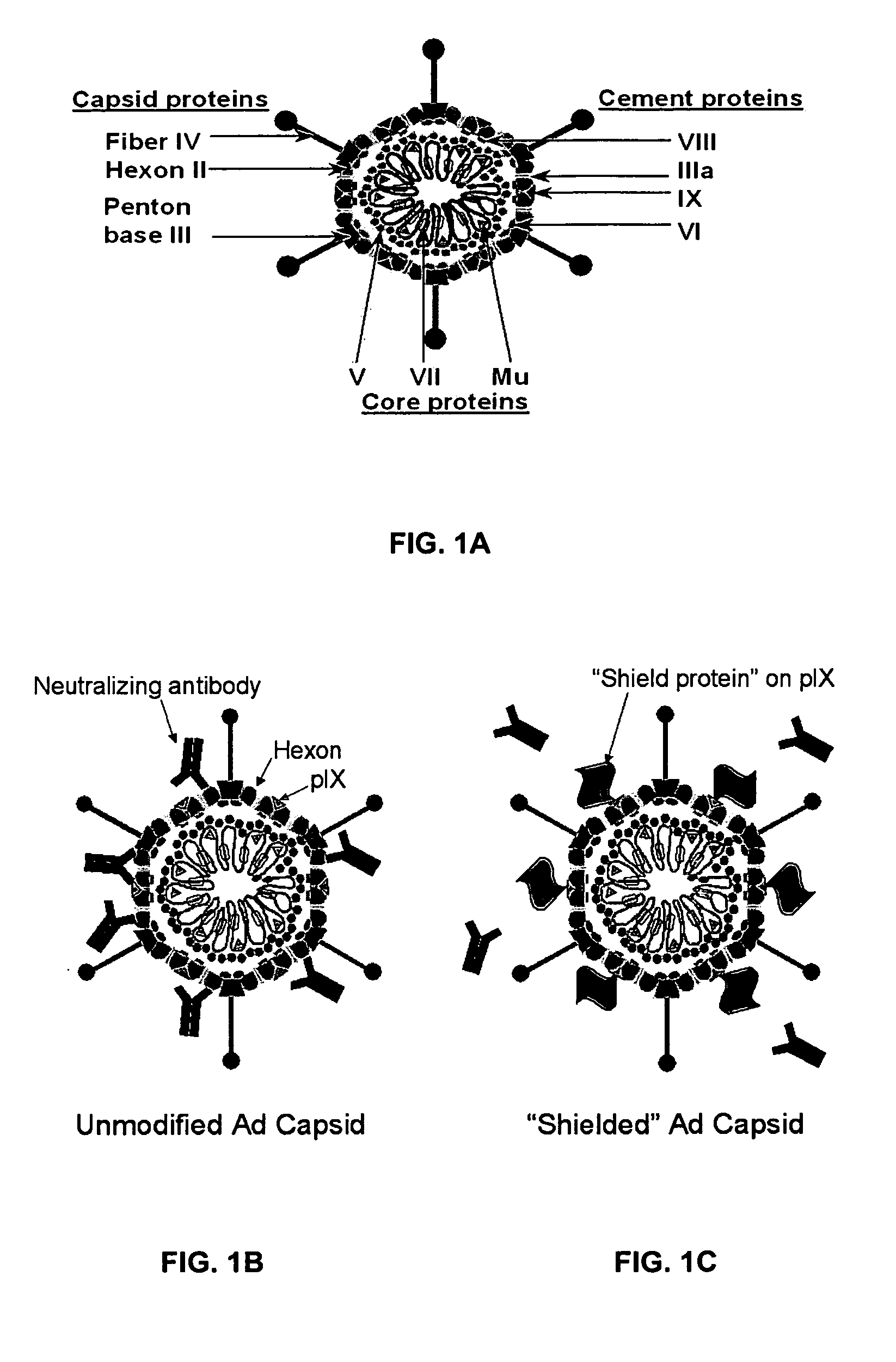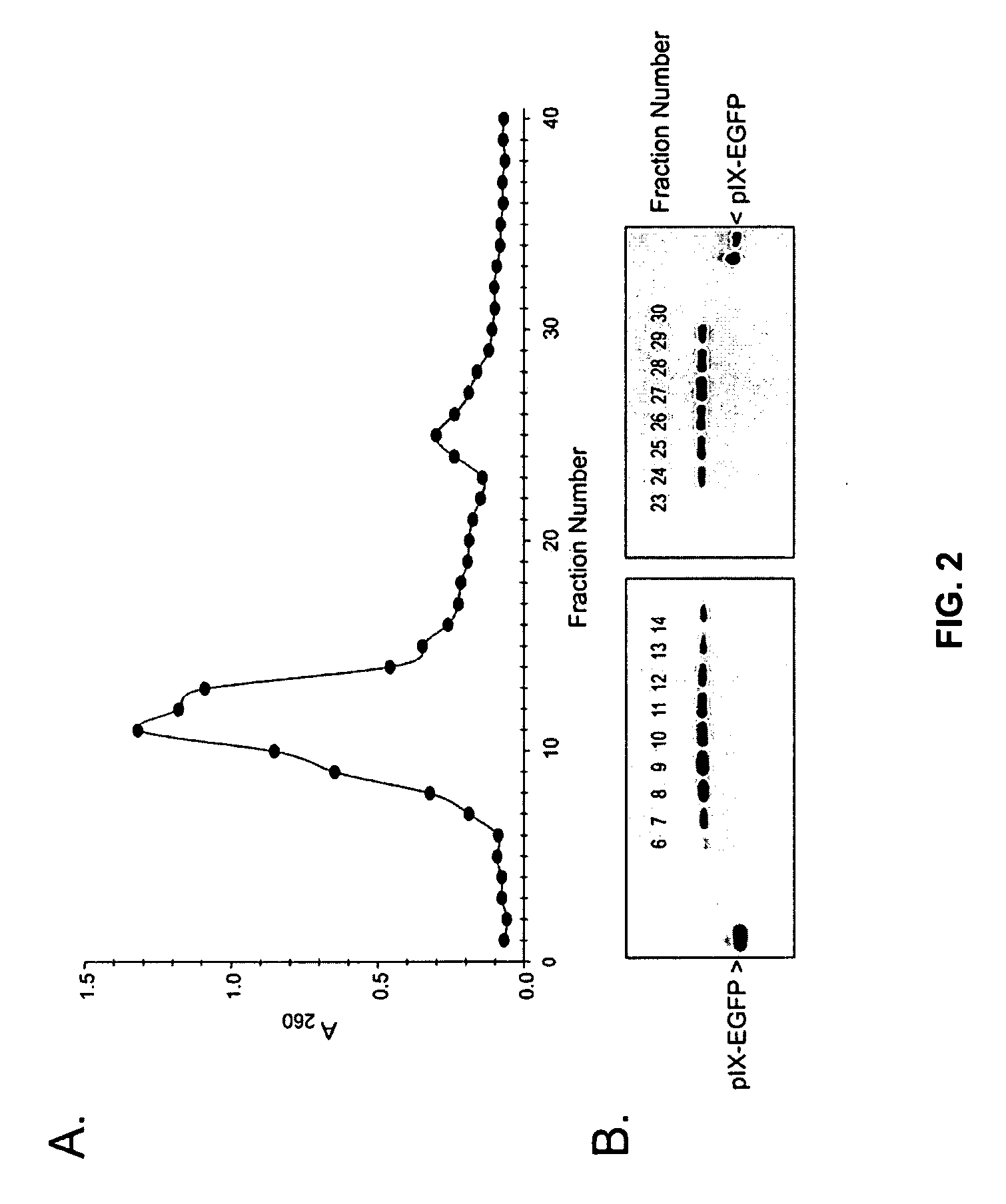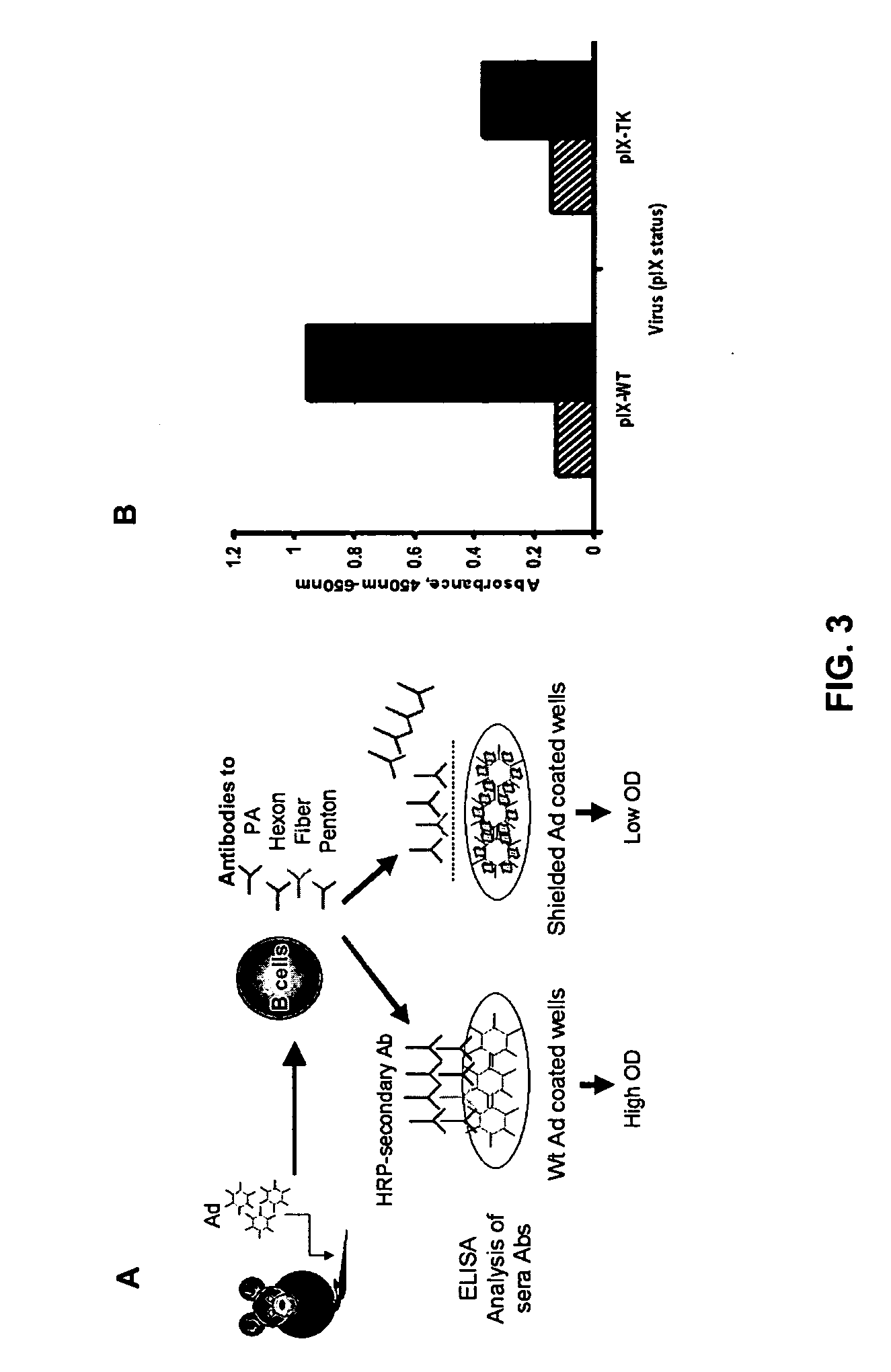Shielded adenoviral vectors and methods of use
a technology of shielded adenoviral cells and vectors, applied in vectors, viruses, peptides, etc., can solve the problems of inconvenient production of proteins and/or antibodies, difficulty in detecting adenoviral cells, and limiting the therapeutic utility of host humoral responses, so as to achieve enhanced transduction of clinically relevant cells, less immunogenicity, and less immunogenicity
- Summary
- Abstract
- Description
- Claims
- Application Information
AI Technical Summary
Benefits of technology
Problems solved by technology
Method used
Image
Examples
example 1
[0119] This example demonstrates the antibody evasion of an adenovirus incorporating GFP into the coat protein of pIX in vitro.
[0120] Genetic incorporation of eGFP into the coat protein of pIX and virus propagation. The cDNA of enhanced green fluorescent protein (eGFP) was inserted accordingly to Le et al. (2004, Mol. Imaging. 3:105-116) in frame at a NheI restriction site after a FLAG tag amino acid sequence linked to the carboxy terminus of pIX in the shuttle vector pShlpIXNhe. The plasmid was linearized with PmeI digestion to allow homologous recombination with the adenovirus genome in E. coli using standard methodologies with the commercially available AdEasy (Q-BIOgene) system. Viruses, which contain the wild type Ad5 fiber, were propagated in 911 cells, and purified by double cesium chloride ultracentrifugation as standard, then dialyzed against phosphate-buffered saline with Mg2+, Ca2+, and 10% glycerol.
[0121] In vitro antibody evasion assessment of an adenovirus incorporat...
example 2
[0122] This example demonstrates the antibody evasion of an adenovirus incorporating GFP into the coat protein of pIX in vivo in GFP transgenic mice.
[0123] GFP transgenic mice are used so that antibodies against the shielding protein, GFP, will not be raised. The adenovirus incorporating GFP into pIX, as described in Example 1, is tested for the evasion of the immune system in both naïve and immunized mice. Naïve mice are not pre-exposed to a non-replicative Ad5 vector, while immunized mice are injected intravenously with 1×1010 pu of a non-replicative Ad5 vector to generate neutralizing adenovirus antibodies. Ad-pIX-GFP is administered to both groups of animals at a dose of 1×109, 1×1010, 1×1011 pu. Serum samples are taken at various times post-infection and adenovirus neutralizing antibodies are measured. The peak of an antibody response is expected to be detectable between 14 and 21 days following the immunization procedure Anti-adenovirus antibody profiles of the animals are ob...
example 3
[0124] This example demonstrates the targeting activity of an adenovirus incorporating an antibody-related fragment into the coat protein of pIX in vitro.
[0125] Generation of an adenovirus containing an antibody-related fragment incorporated in the pIX coat protein. pSILucIXNhe shuttle vector, a modified form of pShlpIXNhe containing the luciferease gene, was used to insert the cDNA of a single chain antibody (scFv) at the C terminus of pIX following the FLAG tag preceding the NheI cloning site. PCR procedures created Nhe1 ends on the scFv cDNA and the resulting fragment was ligated into the Nhe1 site in this vector. The plasmid was linearized with PmeI digestion to allow homologous recombination with the Ad genome in E. coli using standard methodologies with the commercially available AdEasy system. Viruses, which contain the wild type Ad5 fiber, were propagated in 293 cells, and purified by double cesium chloride ultracentrifugation as standard, then dialyzed against 10 mM Tris b...
PUM
| Property | Measurement | Unit |
|---|---|---|
| temperature | aaaaa | aaaaa |
| concentration | aaaaa | aaaaa |
| optical density | aaaaa | aaaaa |
Abstract
Description
Claims
Application Information
 Login to View More
Login to View More - R&D
- Intellectual Property
- Life Sciences
- Materials
- Tech Scout
- Unparalleled Data Quality
- Higher Quality Content
- 60% Fewer Hallucinations
Browse by: Latest US Patents, China's latest patents, Technical Efficacy Thesaurus, Application Domain, Technology Topic, Popular Technical Reports.
© 2025 PatSnap. All rights reserved.Legal|Privacy policy|Modern Slavery Act Transparency Statement|Sitemap|About US| Contact US: help@patsnap.com



